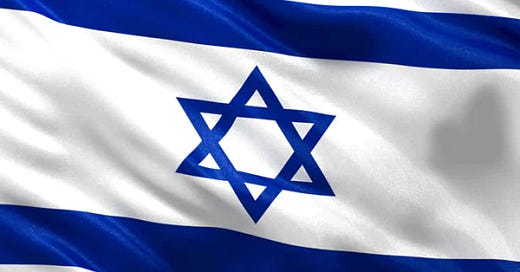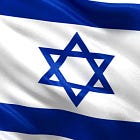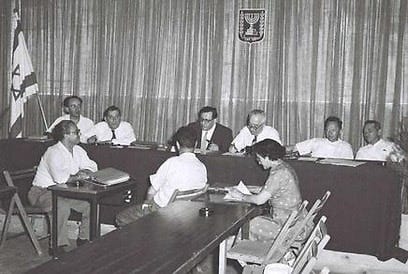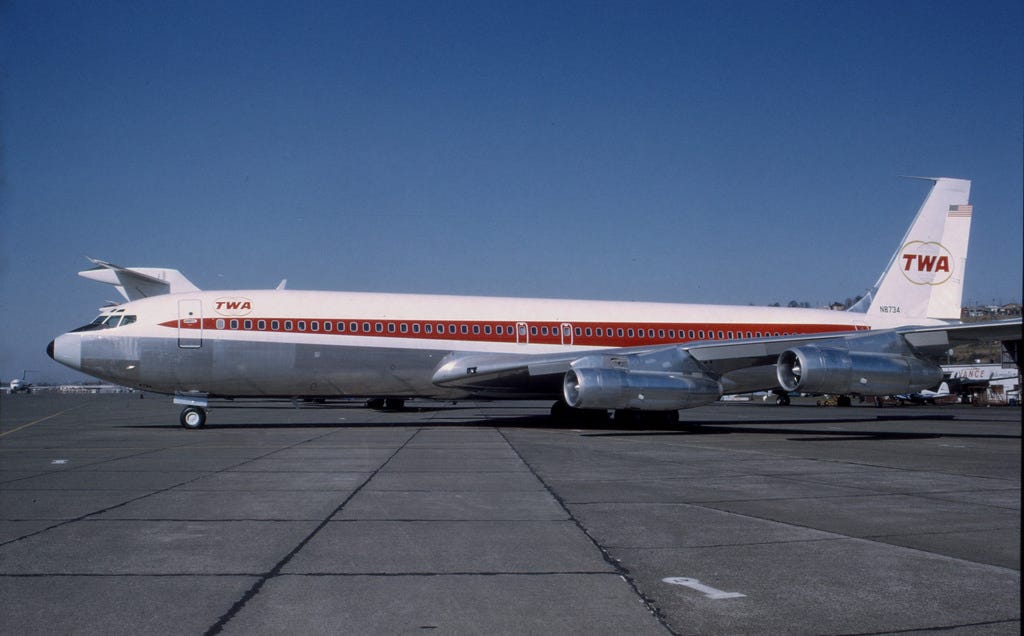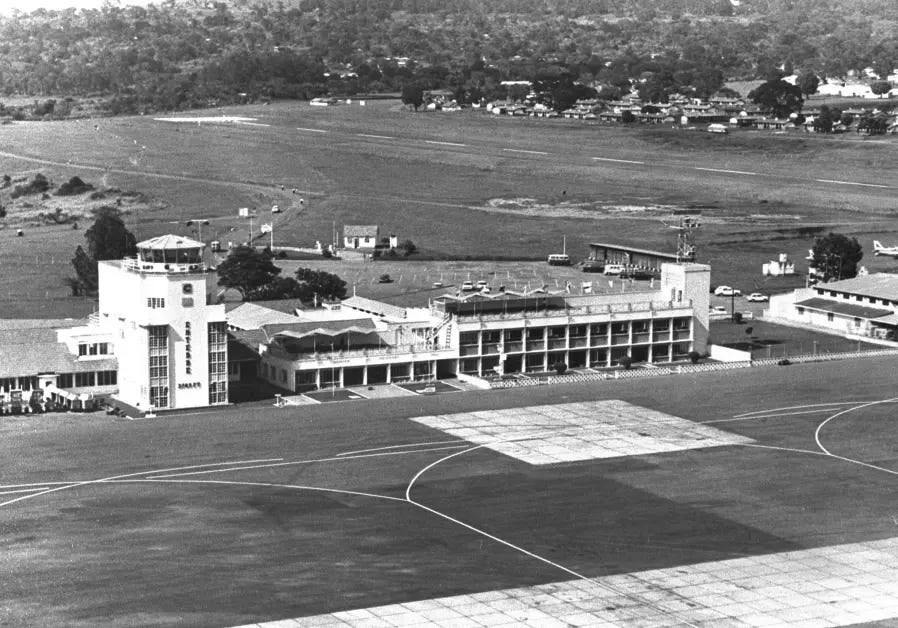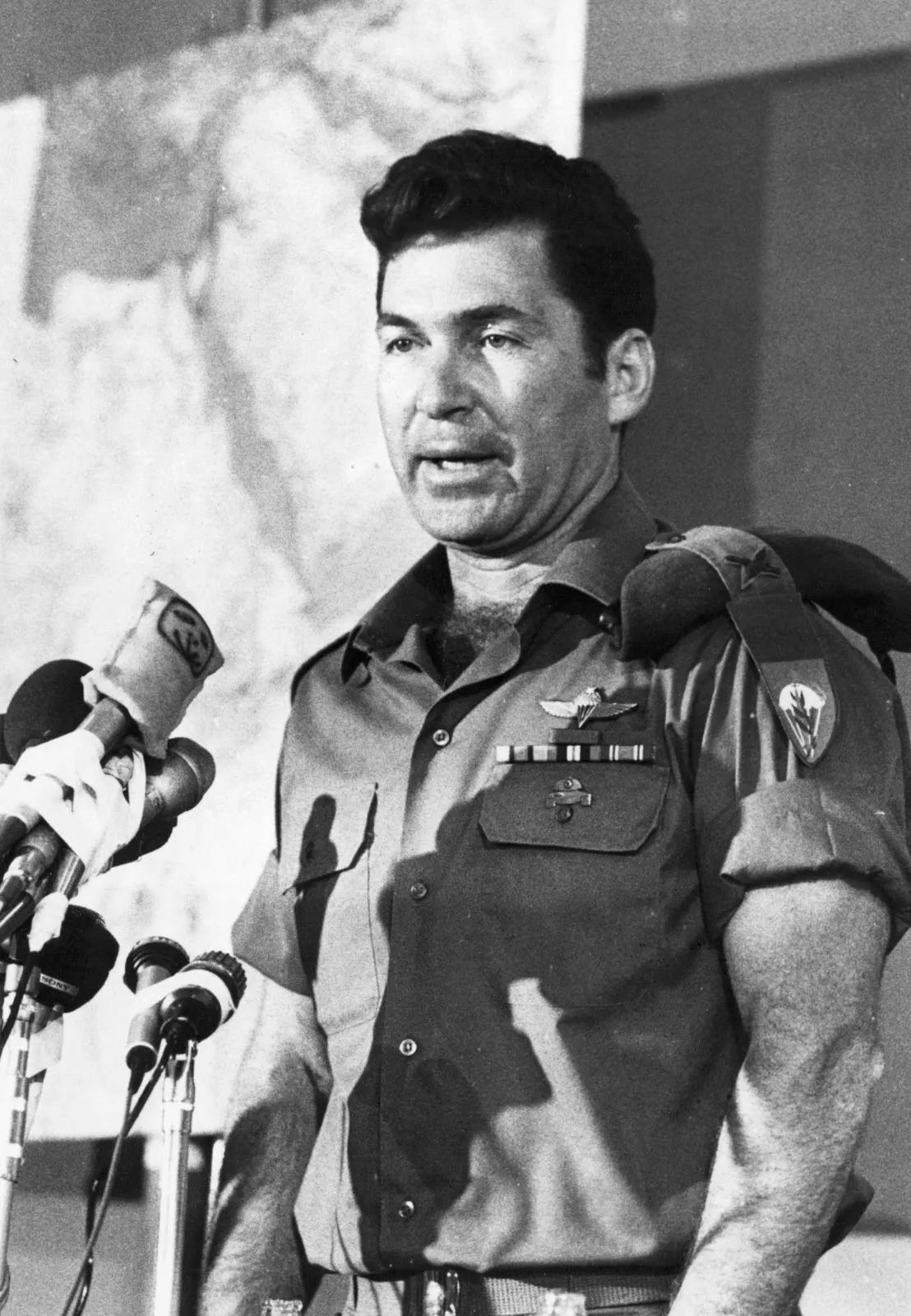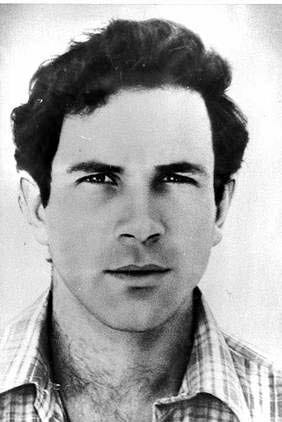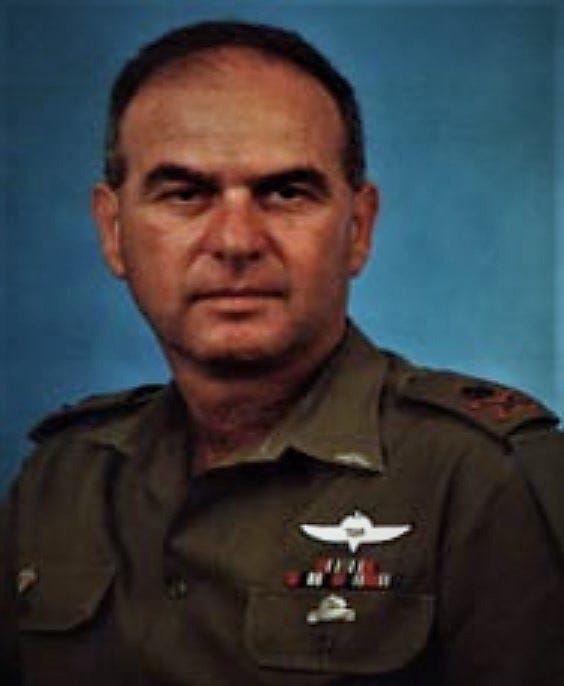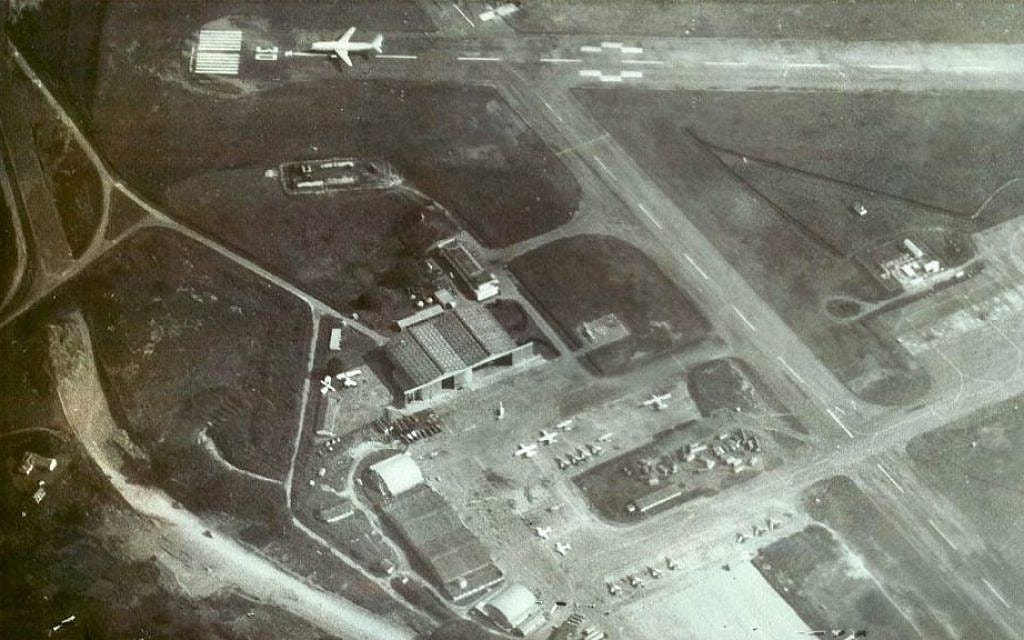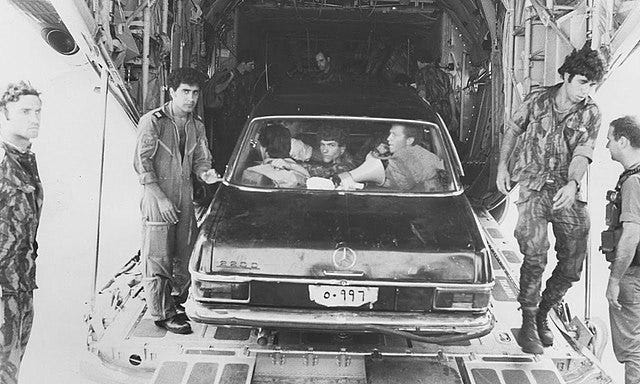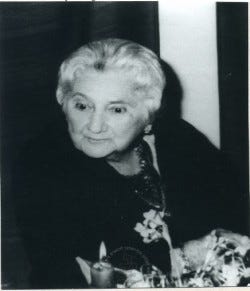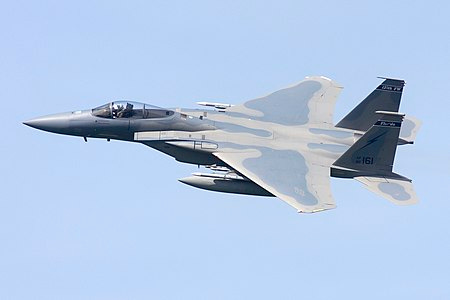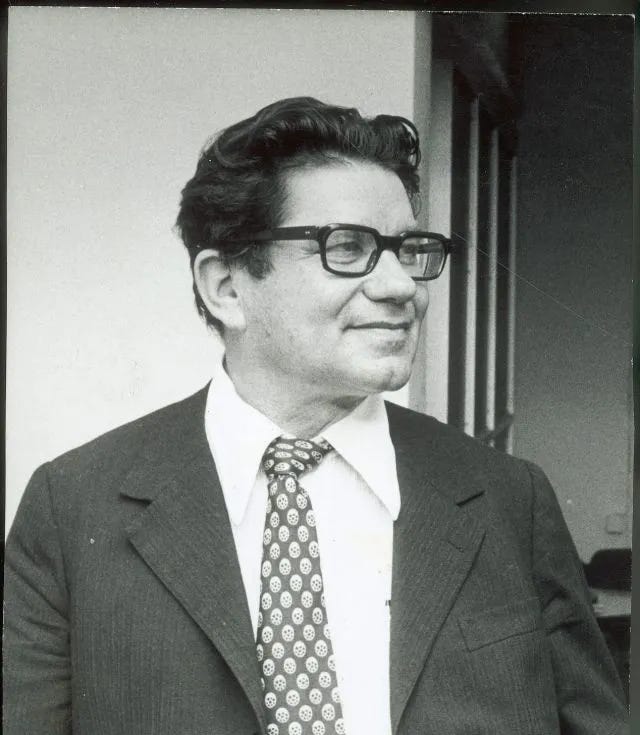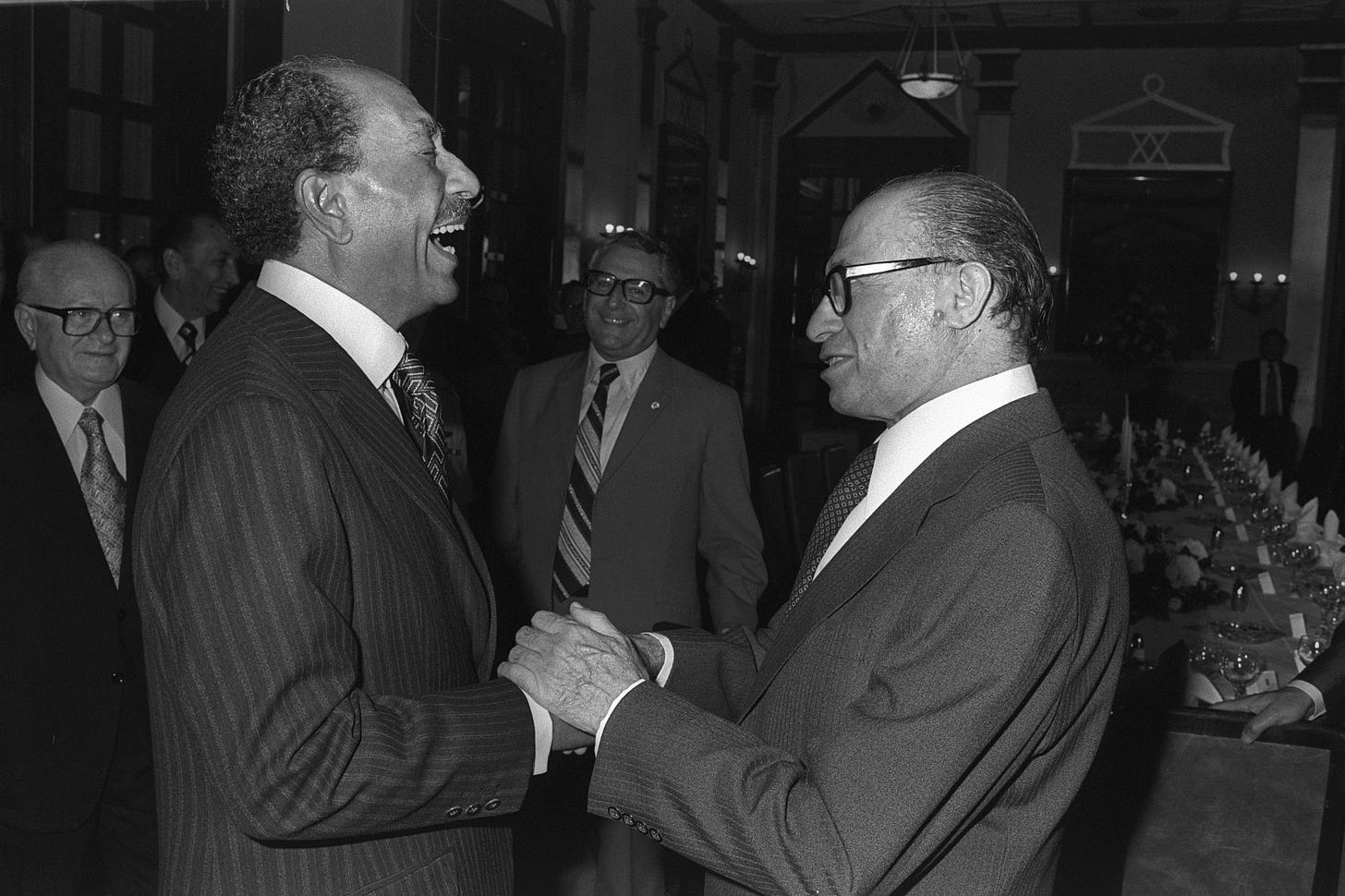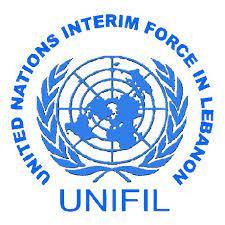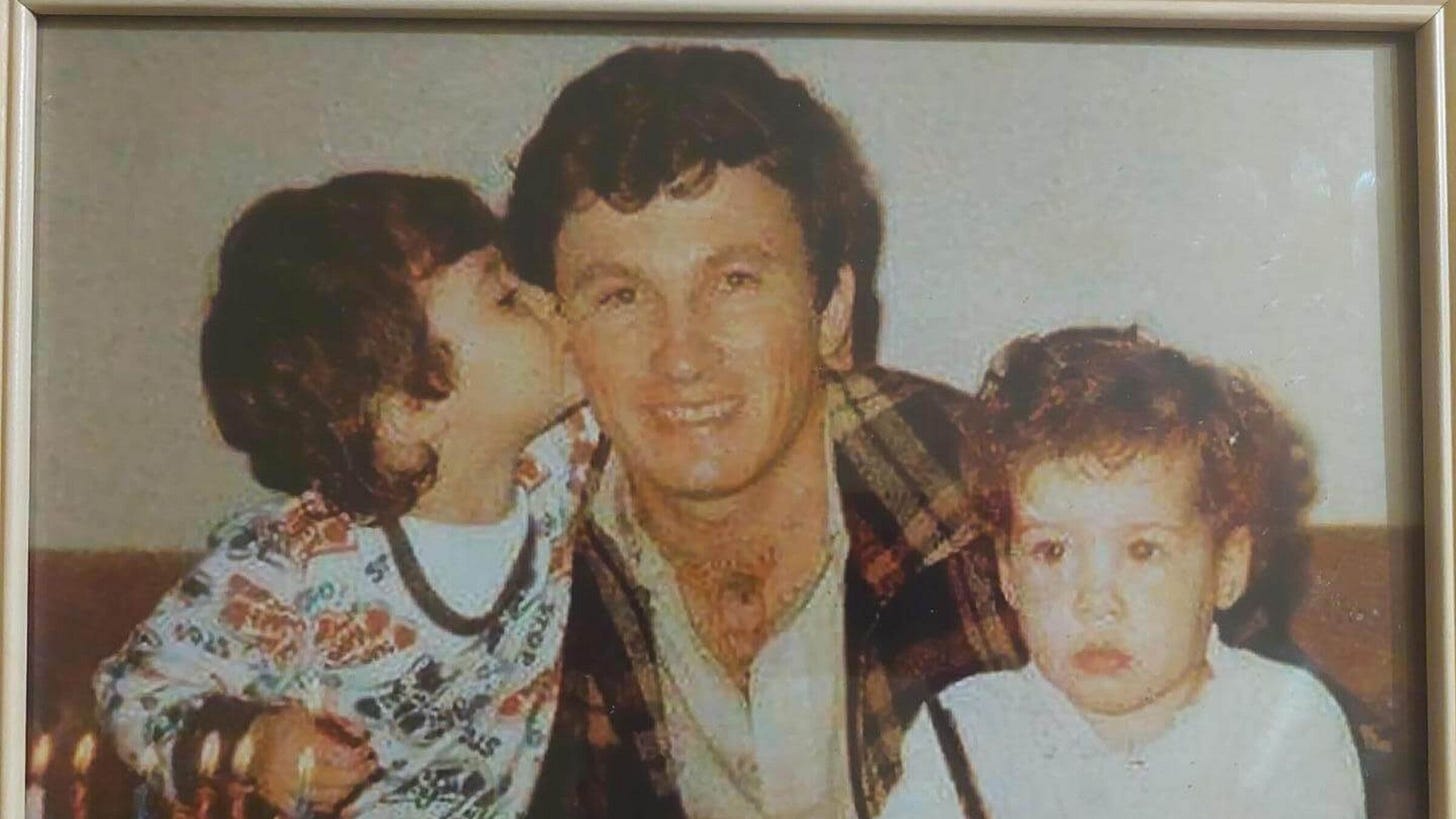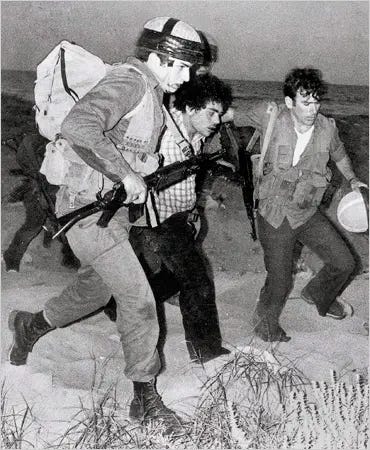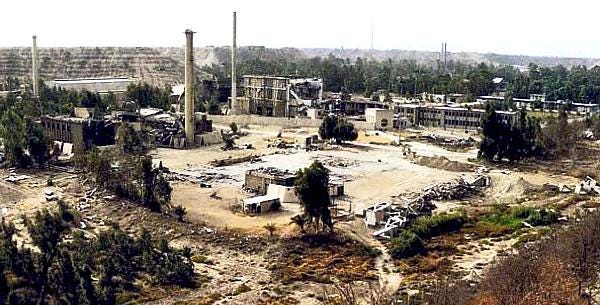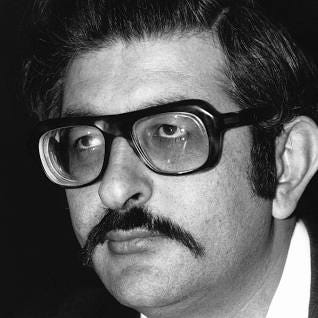A Short History of Israel Part XVII
Post Yom Kippur War to the first Lebanon incursion, with a long stop in Entebbe.
In my last post, I ended my look at the Yom Kippur War. Click the link below if you missed it.
Today I will outline the years between the end of the war and the beginning of the Israeli invasion of Lebanon.
1973
December 17 1973: Five Palestinian terrorists shoot at passengers waiting in an El Al Israel Airlines lounge at a Rome airport, killing two civilians. Then, hurled incendiary grenades at a Pan-Am Boeing 707 awaiting to take off, killing 29 passengers.
1974
February 1 1974: In Norway, five Mossad agents are sentenced to prison terms for the assassination of Ahmed Bouchiki. The prison terms range from two and a half to five years, although all the agents are eventually released within 22 months and deported back to Israel.
March 5 1974: Israel completes its pullback to the east side of the Suez Canal, as agreed upon in the Agreement on Disengagement following the Yom Kippur War.
April 1 1974: The Agranat Commission publishes its interim report about the Yom Kippur War, which calls for the dismissal of the IDF's Chief of Staff David Elazar, director of the Israeli Military Intelligence Directorate Eli Zeira and the Chief of the Israeli Southern Command Shmuel Gonen. The interim report states that they were responsible for the failure in preparing the army for war, and for the operational and intelligence failures which occurred prior to the Yom Kippur War. Nevertheless, the Agranat Commission refuses to give an opinion on the responsibility of the political leadership, including Prime Minister Golda Meir and the Minister of Defense Moshe Dayan arguing that this is beyond its scope.
April 11 1974: Three members of the PFLP-GC (Popular Front for the Liberation of Palestine-General Command) cross the Israeli border from Lebanon, enter an apartment building in the town of Kiryat Shmona and kill all eighteen residents there, half of whom are children.
April 19 1974: Eight Israeli soldiers are killed when two helicopters collide over Mahanayim Airfield.
May 15 1974: Terrorists from the Democratic Front for the Liberation of Palestine cross the Israeli border from Lebanon. They attack a van killing two Israeli Arab women, they enter an apartment building in the town of Ma'alot and kill a couple and their 4-year-old son. After that the militant squad take over a local school and hold 105 students and 10 teachers hostage. They demand the release of 23 Arab militants from Israeli prisons, or they would kill the students. On the second day of the standoff, a unit of the Golani Brigade stormed the building. During the assault, the hostage-takers detonated their grenades and shot the children. Ultimately, 25 hostages were killed, including 22 children, 68 more were injured.
May 31 1974: Israel and Syria sign an agreement on disengagement, following the Yom Kippur War
June 25 1974: Three Arab militant squads infiltrated the coastal city of Nahariya by sea. During the attack three civilians and one Israeli soldier were killed.
September 8 1974: – TWA Flight 841 traveling from Tel Aviv to Athens crashed into the Ionian Sea after a bomb planted in the baggage compartment by the PFLP detonated, killing all the 88 people aboard.
November 19 1974: A raid on the city of Beit She’am in launched by the Democratic Front for the Liberation of Palestine. Four civilians were killed and more than 20 civilians were injured.
1975
January 8 1975: Yehoshua Ben-Zion is convicted of embezzling £20 million from the Israeli-British Bank which collapsed in July 1974 owing British investors £46.6 million. He was sentenced to 12 years in prison. Later, Ben-Zion was pardoned by the Israeli president after intervention of Menachem Begin and was released after serving 3 years.
March 6 1975: Eight Al-Fatah commandos seize the Savoy Hotel in Tel Aviv after they rowed ashore from the Mediterranean Sea. 13 civilians were taken hostage. Later in the day the Israeli counter-terrorism unit Sayeret Matkal stormed the hotel, killing seven of the eight militants. Eight hostages and three of the Israeli soldiers died in the operation.
May 3 1975: Jerusalem was struck by missiles for the first time, after two Czechoslovakian made Katyusha rockets, fired by Arab guerillas, struck 1600 feet from the Knesset.
June 15 1975: A terror cell from the Arab Liberation Front, crosses the border from Lebanon and infiltrate the moshav of Kfar Yuval during the night. The terrorists enter one house, killing a resident that tried to stop them. They hold the rest of the family hostage, demanding the release of Palestinians held in Israeli prisons. A raid by an IDF infantry unit kills all four assailants. Two hostages and one soldier are also killed during the raid
July 4 1975: A refrigerator packed with twelve pounds of C4, explodes in Zion Square in Jerusalem. Fifteen people are killed and 77 injured in the attack. The PLO claims responsibility.
November 10 1975: United Nations General Assembly Resolution 3379, which equates Zionism with racism, is adopted by a vote of 72 to 35 (with 32 abstentions). The resolution was eventually revoked by Resolution 4686 on December 16 1991.
1976
June 27 1976: Air France Flight 139, with a crew of twelve and 246 passengers left Tel Aviv and flew to Athens, Greece, where it picked up an additional 58 passengers. It departed for Paris at 12:30 pm, just after takeoff, the flight was hijacked by two Arabs from the Popular Front for the Liberation of Palestine – External Operations (PFLP-EO), and by two Germans, Wilfried Böse and Brigitte Kuhlmann, from the German terrorist organization Revolutionary Cells. The hijackers diverted the flight to Benghazi, Libya. There it was held on the ground for seven hours for refueling. During that time the hijackers released a British-born Israeli citizen, Patricia Martell, who pretended to have a miscarriage. The plane left Benghazi and at 3:15 pm on the 28th, more than 24 hours after the flight's original departure, it arrived at Entebbe Airport in Uganda. At Entebbe, the four hijackers were joined by at least four others and were supported by the forces of Uganda's president, Idi Amin. The hijackers transferred the passengers to the transit hall of the unused former airport terminal, where they kept them under guard. Amin came to visit the hostages, almost on a daily basis, updating them on developments and promising to use his efforts to have them freed through negotiations.
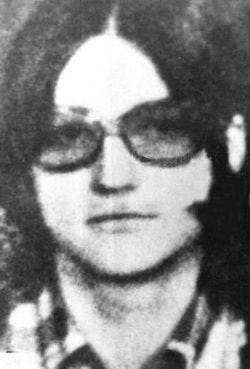
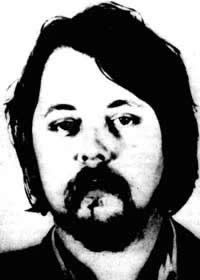
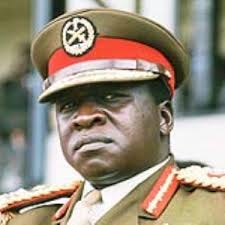
On June 28, hijackers issued their demands: In addition to a ransom of $5 million for the release of the airplane, they demanded the release of 53 Palestinian and pro-Palestinian militants, 40 of whom were prisoners in Israel. They stated that if these demands were not met by July 1 1976, they would begin to kill hostages. On June 29, the hijackers separated the Israelis and Jewish passengers, (including those holding dual citizenship), from the other hostages and moved them into another room. On July 1, after the Israeli government had agreed to negotiations, the hostage-takers extended their deadline to noon on July 4 and released 148 non-Israeli captives who were flown to Paris a few hours later. Among the 106 hostages staying behind were the 12 members of the Air France crew who refused to leave, ten other passengers, and the 84 Israelis and Jewish passengers.
As the crisis unfolded, attempts were made to negotiate the release of the hostages. According to declassified diplomatic documents, the Egyptian government under Sadat tried to negotiate with both the PLO and the Ugandan government. PLO chairman Yasser Arafat sent his political aide Hani al-Hassan to Uganda as a special envoy to negotiate with the hostage takers and Amin, however, the hijackers refused to see him. As the hijacking went on and planning for a possible rescue mission began, the Mossad built an accurate picture of the whereabouts of the hostages, the number of hijackers, and the involvement of Ugandan troops, based on information from the released hostages. In addition, they consulted with Israeli firm Solel Boneh who had built the terminal where the hostages were held. While planning the military operation, the IDF erected a partial replica of the airport terminal with the assistance of the Israeli workers who had helped build the original.
A key point in the planning of the raid, was the question of how to refuel the Lockheed C-130 Hercules they intended to use while en route to Entebbe. The Israelis lacked the logistical capacity to aerially refuel four aircraft so far from Israeli airspace. Several East African nations, including the logistically preferred choice, Kenya, were sympathetic, however, none wished to incur the wrath of Amin or the terrorists by allowing the Israelis to land their aircraft within their borders. The raid could not proceed without assistance from at least one East African government. After Bruce MacKenzie, the Kenyan Minister of Agriculture, Abraham Block, the owner of the successful Block Hotel chain and other members of the large Jewish community of Kenya interceded on Israel’s behalf, the Israeli government eventually secured permission from Kenyan President Jomo Kenyatta for the IDF task force to cross Kenyan airspace and refuel at Embakasi Airport. The Mossad was also allowed to collect intelligence prior to the operation, and the IAF was allowed access to the Nairobi airport. On July 3, the Israeli cabinet approved a rescue mission, codenamed Operation Thunderbolt. Major General Yekutiel Adam was named overall Operations Commander and Brigadier General Dan Shomron was named as Ground Forces Commander. The task force assembled for the operation numbered 100 personnel, and was composed of the following elements.
Command and Control Element
This small group comprised the operations, communication and support personnel, as well as Operation Commander Brigadier General Dan Shomron and Air Element Commander Ami Ayalon.
Assault Element
A 29-man assault unit led by Lieutenant Colonel Yonatan Netanyahu, (older brother of the future Prime Minister Benjamin Netanyahu), composed entirely of commandos from Sayeret Matkal. Their primary task was assaulting the old terminal and rescuing the hostages.
Securers Element
The paratroop force led by Colonel Matan Vilnai was tasked with securing the airport, and clearing the runways. As well as, protection and refueling of the Israeli aircraft in Entebbe.
The Golani force led by Colonel Uri Sagi was tasked with getting the C-130 Hercules aircraft being used for the hostage evacuation as close to the terminal as possible. Securing the aircraft while it was on the ground, getting the hostages on board and acting as the operational reserves.
The Sayeret Matkal force led by Major Shaul Mofaz was tasked with clearing the military airstrip, blocking any hostile action from Ugandan Army forces attempting to intervene and destroying the squadron of MiG fighters on the ground, to prevent any possible interceptions by the Uganda Air Force as the mission withdrew.
Taking off from Sharm el-Sheikh at 2:30 pm on July 3, the task force flew along the international flight path over the Red Sea, flying at a height of no more than 100 feet to avoid radar detection by Egyptian, Sudanese, and Saudi Arabian radars. Near the southern end of the Red Sea the C-130s turned south and crossed into Ethiopian territory, passing west of Djibouti, then to a point northeast of Nairobi, Kenya, where they turned west, passing over the African Rift Valley and Lake Victoria. Two Boeing 707 jets followed the cargo planes. The first plane contained medical facilities and landed at Embakasi Airport in Nairobi. The second 707 contained General Yekutiel Adam and circled over Entebbe Airport controlling the operation.
The C-130s landed at Entebbe on July 3, at 11:00 pm Israel time, with their cargo bay doors already open. One of the planes taxied into a ditch after landing because the proper layout of runways and taxiways had not been known beforehand. One of the other aircraft contained a black Mercedes 220D sedan that looked like Idi Amin's Presidential vehicle and Land Rovers that always accompanied Amin's Mercedes, were brought along. The Israelis hoped they could use them to bypass security checkpoints. When the C-130s landed, the assault team members drove the vehicles to the terminal building in the same fashion as Amin. As they approached the terminal, two Ugandan sentries, aware that Idi Amin had recently purchased a white Mercedes, ordered the vehicles to stop. The commandos shot the sentries using silenced pistols. This was against the plan and against the orders – the Ugandans were to be ignored, unless they shot first. An Israeli commando in one of the following Land Rovers opened fire with an unsuppressed rifle on other Ugandans, and fearing the hijackers would be alerted prematurely, the assault team quickly approached the terminal.
The Israelis left their vehicles and ran towards the terminal. The hostages were in the main hall of the airport building, directly adjacent to the runway. Entering the terminal, the commandos shouted through a megaphone, "Stay down! Stay down! We are Israeli soldiers," in both Hebrew and English, however, Jean-Jacques Maimoni, a 19-year-old French immigrant to Israel, stood up and was killed when two soldiers mistook him for a hijacker. Another hostage, Pasco Cohen, was also fatally wounded by gunfire from the commandos and a third hostage, Ida Borochovitch, a Russian Jew who had emigrated to Israel, was killed by a hijacker in the crossfire. According to hostage Ilan Hartuv, Wilfried Böse was the only hijacker who entered the hall housing the hostages after the operation began. At first he pointed his AK-47 at hostages, but "immediately came to his senses" and ordered them to find shelter in the restroom, before he was killed by the commandos. According to Hartuv, Böse fired only at Israeli soldiers and not at hostages. At one point, an Israeli commando called out in Hebrew, "Where are the rest of them?" referring to the hijackers. The hostages pointed to a connecting door to the airport's main hall. The commandos threw several hand grenades, then entered the room and killed the three remaining hijackers, ending the assault. Meanwhile, the other three C-130s had landed and unloaded three M-113 APCs to provide defense during the anticipated hour of refueling. Major Mozaf and his commandos destroyed the Ugandan MiGs and conducted a sweep of the airfield to collect any intelligence they could find.

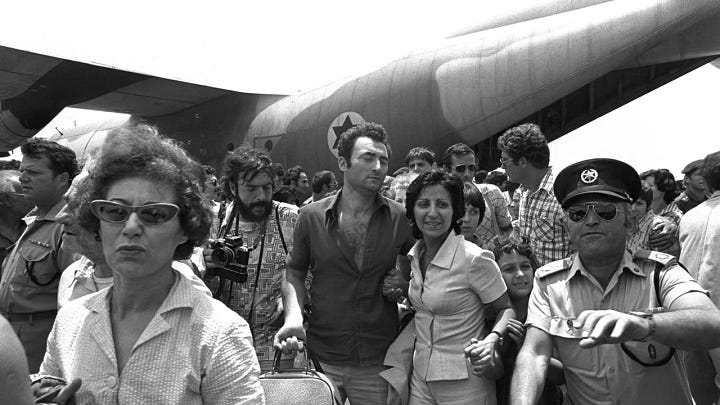
After the raid, the Israeli assault team returned to their aircraft and began loading the hostages, taking fire from Ugandan soldiers in the airport control tower in the process. Yonatan Netanyahu was killed and five other commandos were wounded. The assault team returned fire and ended the firefight after hitting the tower with a RPG. The commandos finished evacuating the hostages, loaded Netanyahu's body into one of the planes, and left the airport. The entire operation lasted 53 minutes – of which the assault lasted only 30 minutes. All seven hijackers present, and 45 Ugandan soldiers, were killed. Eleven MiG-17 and MiG-21s destroyed. Three hostages were killed, one was left in Uganda (see below) and ten were wounded. The rescued hostages were flown to Israel via Nairobi, Kenya, shortly after the raid.
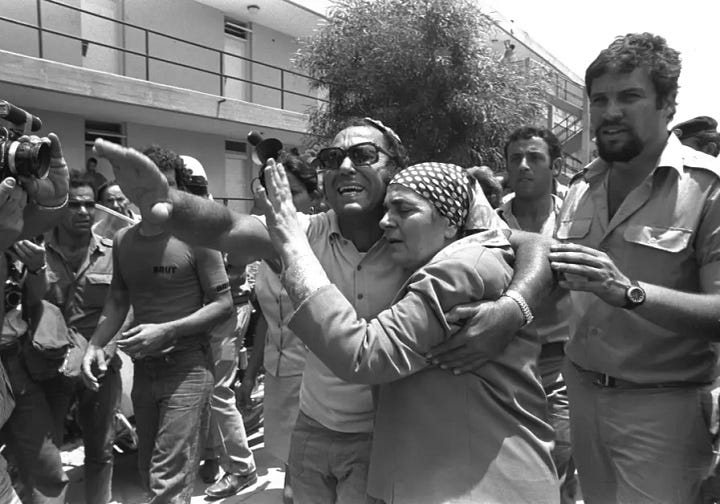
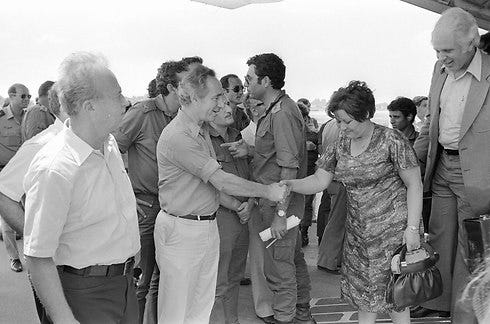
Days before the raid, Dora Bloch, a 74-year-old Israeli who also held British citizenship, was taken to Mulago Hospital in Kampala after choking on a chicken bone. After the raid she was dragged from her hospital bed and killed by two army officers on Amin's orders, along with some of the medical staff who had tried to prevent the killing. Bloch's body was dumped in the trunk of a car that had Ugandan intelligence services number plates. Her remains were discovered at a sugar plantation 20 miles east of Kampala in 1979.
July 11 1976: Miss Israel, Rina Mor, wins the title of Miss Universe 1976, becoming the first Israeli to win one of the most publicized international beauty contest.
September 5 1976: Attorney-General Aharon Barak was informed that the police had been inquiring into allegations against Asher Yadlin, who was about to be appointed Governor of the Bank of Israel, of improper conduct in the management of Kupat Holim (One of the state-run national health providers).
December 10 1976: The first F-15 fighter purchased from the US, arrives in Israel. The fact that they landed in Israel on a Friday evening, after the start of Sabbath, causes a political crisis and prompts the religious parties in the Knesset to topple the first Rabin government.
October 22 1976: Israeli naval commandos raid the harbor in Tyre, Lebanon and sink a ship known to be a weapons smuggling vessel for the PLO.
October 24 1976: The Israeli the cabinet resolved, without prejudging the charges against Asher Yadlin, that it could no longer delay the appointment, and named Director-General of the Treasury Arnon Gafni as governor of the Bank of Israel.
1977
January 3 1977: After being accused of 30 different offences, including embezzlement, in November of 1976, and after various rumors were published about possible charges. The Israeli Minister of Housing Avraham Ofer commits suicide. In a suicide note, Ofer said he was innocent, but did not have the strength "to bear any more." He was reported to have been particularly depressed by the lack of support from his political associates.
March 14 1977: Asher Yadlin pleaded guilty to bribery, totaling $124,000, but claimed that he had handed over $80,000 of the money to Labor party funds, adding that he had raised "millions" for the party. The judge did not accept his claim and sentenced him to five years imprisonment and a fine of $250,000.
April 7 1977: Yitzhak Rabin announces his retirement from the premiership of the Labor Party, following the Dollar Account affair. In March 1977, while Yitzhak Rabin was meeting United States President Jimmy Carter, Leah Rabin, (his wife), was spotted making a withdrawal from a Washington DC bank. At the time, it was illegal for Israeli citizens to hold bank accounts overseas, barring exceptional circumstances; the account in question had been opened while Yitzhak Rabin was the Israeli ambassador to the United States (1968–73), and according to procedure, should have been closed once he left that post. Criminal charges were brought against Leah Rabin for maintaining an illegal bank account. She pled guilty to the charges in the Tel Aviv District Court and was fined $27,000. The Israeli Treasury imposed an administrative fine of $15,000 on Yitzhak Rabin, but ruling that his role in the currency violation had been passive.
April 7 1977: Maccabi Tel Aviv wins its first European Basketball Championship, defeating Mobilgirgi Varese 78 to 77 in Belgrade. An achievement that produced Tal Brody's famous sentence "We are on the map, not only in basketball".
May 10 1977: An IAF S-65C Yas'ur (The Israeli version of the US CH-53) crashes in the Jordan Valley, killing 54.
November 19 1977: Egyptian President Anwar Sadat becomes the first Arab leader to officially visit Israel, when he meets with Israeli Prime Minister Menachem Begin, seeking a permanent peace settlement. The next day he gives a speech to the Knesset.
December 25 1977: Menachem Begin becomes the first Israeli Prime Minister to visit Egypt when he meets with Sadat in Cairo.
1978
September 17 1978: The Camp David Accords are signed between Israel and Egypt.
October 27 1978: Egyptian President Anwar Sadat and Israeli Prime Minister Menachem Begin win the Nobel Peace Prize for their progress toward achieving a Middle East accord.
March 11 1978: Eleven Fatah members led by 18-year-old female terrorist, Dalal Mughrabi traveled from Lebanon to Israel, killed several tourists and hijack a bus on the coastal road near Haifa. After a lengthy chase and shootout, 37 Israelis were killed and 76 wounded.
On 14 March 1978, Israel launched Operation Litani, in response to the March 11 attack. The stated goals of the operation were to push Palestinian militant groups, particularly the PLO, away from the border with Israel, and to bolster Israel's ally the South Lebanon Army. The operation began with an air, artillery, and naval bombardment, after which the IDF launched a two division attack along the entire border, in order to establish a ten mile deep corridor, free of any PLO fighters. Paratroopers landed from helicopters to capture all the bridges on the Litani River, cutting off the possibility of retreat by the PLO. Unfortunately, the majority of PLO fighters not killed on the initial assault, managed to escape across the river before the bridges were seized. On March 19 1978, in response to the invasion, the UN Security Council adopted Resolutions 425 and 426, calling for the withdrawal of Israeli forces from Lebanon. The UN Interim Force in Lebanon (UNIFIL) was created to enforce this mandate, specifically "for the purpose of confirming the withdrawal of Israeli forces, restoring international peace and security and assisting the Government of Lebanon in ensuring the return of its effective authority in the area".
Resolution 425 didn't result in an immediate end to hostilities, as the Israelis continued military operations for two more days until they ordered a ceasefire. The PLO routinely attacked Israel during the period of the cease-fire, with over 270 documented attacks. People in Galilee regularly had to leave their homes during because of PLO shelling. Documents captured in PLO headquarters after the 1982 Israeli invasion of Lebanon, showed the shelling had come from PLO fighters inside Lebanon. Arafat refused to condemn these attacks on the grounds that the cease-fire was only relevant to Lebanon. The PLO leadership finally ordered a ceasefire on March 28, after a meeting between UNIFIL commander General Emmanuel Erskine and Yasser Arafat in Beirut.
There were elements of the Palestinian resistance movement that were opposed to the ceasefire agreement and tried to organize violations of the ceasefire. In April 1978, mid-level Fatah leader Abu Daoud organized cells of 80 fighters with the intention of breaking the ceasefire. Arafat ordered the arrest of all involved and Abu Daoud was later accused of collaborating with Fatah renegade Abu Nidal to break the ceasefire.
UNIFIL forces arrived in Lebanon on March 23 1978, setting up headquarters in Naqoura. Israeli forces withdrew later in 1978, turning over positions inside Lebanon to their ally, the South Lebanon Army (SLA) under the leadership of Major Saad Haddad and creating a twelve mile wide Security Zone along the border.
1979
March 22 1979: The Knesset approves the peace treaty between Israel and Egypt.
March 26 1979: In a ceremony in the Rose Garden at the White House, President Anwar Sadat of Egypt and Prime Minister Menachem Begin of Israel sign a peace treaty. In doing so Egypt becomes the first Arab country to officially recognize Israel.
April 22 1979: A group of four Palestine Liberation Front (PFL), militants, led by the 16-year-old Samir Kuntar, enter Israel from Lebanon and infiltrated the Israeli town of Nahariya. The squad murdered four Israeli civilians, including three members of one family: Danny Haran and his children, Einat (age four) and Yael (age two). Kuntar was captured and sentenced to five life terms but was traded for the remains of two missing IDF soldiers in 2008. He was killed in a bomb explosion set off by the Free Syrian Army in 2015.
October 21 1979: Moshe Dayan resigns from the Israeli government. He stated that he felt isolated from the Palestinian autonomy talks and was reduced to handling marginal foreign policy chores.
November 13 1979: Israeli Ambassador to Portugal Ephraim Eldar, an embassy chauffeur were wounded and a security guard was killed, during a drive by shooting attack carried out by unidentified Arab militants.
1980
January 26 1980: Israel and Egypt establish diplomatic relations.
February 24 1980: The shekel replaces the Israeli pound.
April 7 1980: Five Arab terrorists from the Iraqi-backed Arab Liberation Front penetrate kibbutz Misgav Am and enter the kibbutz nursery during the night. They kill the kibbutz secretary and an infant boy, and hold the rest of the children as hostages, demanding the release of 50 terrorists held in Israeli prisons. The first attempt at a rescue by an IDF infantry unit was unsuccessful, but a second attempt, a few hours later, succeeds, and all the terrorists are killed. Two kibbutz members and one soldier are killed, four children and 11 soldiers are wounded.
1981
April 18 1981: For the first time, Israel intervened directly in the war between Syria and Lebanese Christians, as Israeli jets shot down two Syrian helicopters, killing four crewmen. Israeli warplanes also bombed Syrian positions on Mount Sannine. Israel claimed that it was taking action to "spread a protective umbrella" over the Lebanese Christian militias.
June 7 1981: Israeli intelligence had been watching the progress of the Iraqi nuclear reactor at Diyala since the Iraqis had purchased a French reactor in 1976. After an Iranian raid on September 30, 1979, damaged the reactor. The Iraqis had repaired the damage and had progressed in the construction process. The Mossad believed that the reactor was going to be used to develop nuclear weapons and that the Iraqis were close to the point where they would be adding the fissionable material, making an attack impossible, politically. On a Sunday at 4:00 pm, eight F-16s loaded with two 2,000 pound unguided bombs each, and six F-15s acting as escorts took off from Israel, flying a 2,000 mile round trip directly to Iraq in Operation Opera. When they arrived over the reactor and released their bombs, at least eight of the sixteen bombs released, struck the containment dome of the reactor, completely destroying both the reactor and an onsite laboratory. No Israeli planes were lost but ten Iraqi soldiers and one French civilian were killed.
March 14 1981: A terrorist flying a motorized hang glider manages to reach Haifa and drop some bombs over the city's bay, but is arrested after he runs out of fuel and is forced to land.
July 10–24 1981: After multiple PLO attacks against Israeli civilians, both the IDF and the IAF began regular bombardments of Palestine Liberation Organization strongholds in Lebanon. In one example, IAF aircraft bombed a residential area of West Beirut that was also home to PLO headquarters. Ten apartment buildings were destroyed, more than 300 people were killed and 800 or more injured, most were civilians.
July 24 1981: American mediator Philip Habib brokered a cease-fire between Israel and the PLO.
August 1 1981: Abu Daoud, the PLO militant who had overseen the 1972 massacre of Israeli athletes was shot five times at close range while sitting in the coffee shop of the Victoria Hotel in Warsaw.
August 10 1981: Palestinian terrorists threw two bombs at an Israeli embassy in Vienna, wounding a 75-year-old woman.
August 29 1981: Palestinian terrorists killed two people and wounded 30 attending a Bar Mitzvah in Vienna.
November 30 1981: The Memorandum of Understanding on Strategic Cooperation was signed by US Secretary of Defense Caspar Weinberger and Israeli Defense Minister Ariel Sharon. The MOU was suspended after 17 days when Israel announced its annexation of the Golan Heights.
December 14: 1981– The Knesset approves the "Golan Heights Law" which applies Israel's government and laws to the Golan Heights. The law was condemned internationally and declared null and void by United Nations Security Council Resolution 497. Israel refused to recognize the UN resolution.
1982
April 19 1982: The evacuation of the Israeli settlement Yamit, in the Sinai Peninsula, begins in accordance with the Egyptian–Israeli Peace Treaty. The evacuation of Yamit was part of the final stage of Israeli evacuation from Sinai. It was carried out in the face of powerful domestic opposition in Israel. Moshe Arens (of the Likud party), the head of the Knesset's Foreign Affairs and Defense Committee, and professor Yuval Ne'eman, the leader of the right-wing Tehiya party, led that opposition. They wanted to stop the evacuation and revoke the peace treaty with Egypt, arguing, that once Egypt had the entire Sinai, it would cancel the peace treaty with Israel and rejoin the rest of the Arab world. Yamit was evacuated on April 23, 1982 amid resistance by some Yamit settlers and other supporters. Some residents barricaded themselves on the rooftops before being dragged into buses by Israeli soldiers. Political extremists from the rest of the country infiltrated Yamit to demonstrate their solidarity and sabotage the withdrawal. Among the more extreme examples of resistance were the disciples of Rabbi Meir Kahane, who vowed to take their own lives rather than surrender. After the personal intervention of Kahane, they agreed to leave. After the evacuation, the entire settlement was flattened by bulldozers to prevent any settlers from returning. On April 25, after the destruction of the settlement, Israel had completed it's withdrawal from the Sinai Peninsula in accordance with the Egyptian–Israeli Peace Treaty.
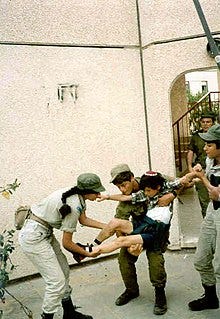
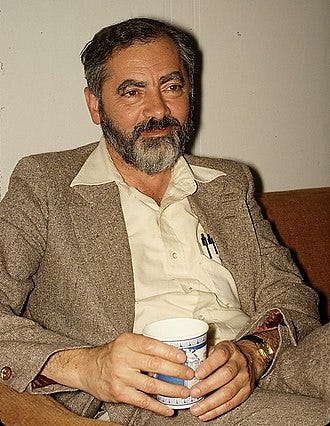
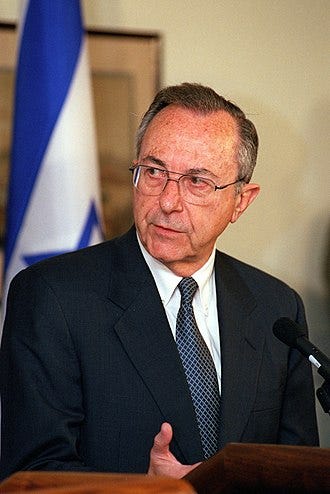
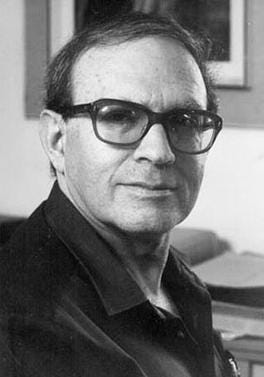
We have now completed our journey through the history of Israel from the end of the Yom Kippur War to just before the second Israeli invasion of Lebanon. Next time we cover the first Israeli war where their very existence wasn't in jeopardy. I will be adding in some non-Israeli facts to set the scene. I hope you will join me for the latest entry in this ongoing series.

